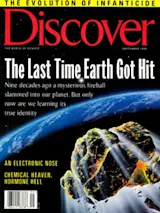It’s no surprise that California, home to the boundary between the Pacific and the North American tectonic plates, should experience earthquakes with disturbing frequency as the two plates lurch past each other. But quakes also occur well east of the boundary, as far away as Colorado. Trying to explain those quakes in terms of plate tectonics is a little bit disingenuous, says Craig Jones, a geophysicist at the University of Colorado in Boulder. We are a thousand miles away from the plate boundary, and deformation over such a broad region is directly in contrast with the fundamental premise of plate tectonics--namely, that plates are rigid.
Jones has come up with an explanation for these puzzling quakes, one that doesn’t involve plate tectonics. Earthquakes far from plate boundaries, like those in Colorado, are caused not by the jostling of distant tectonic plates, he says, but by thick, massive portions of the ...














